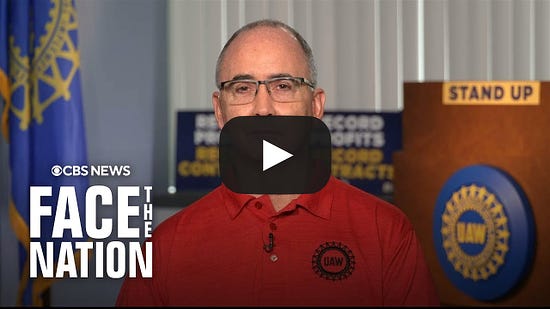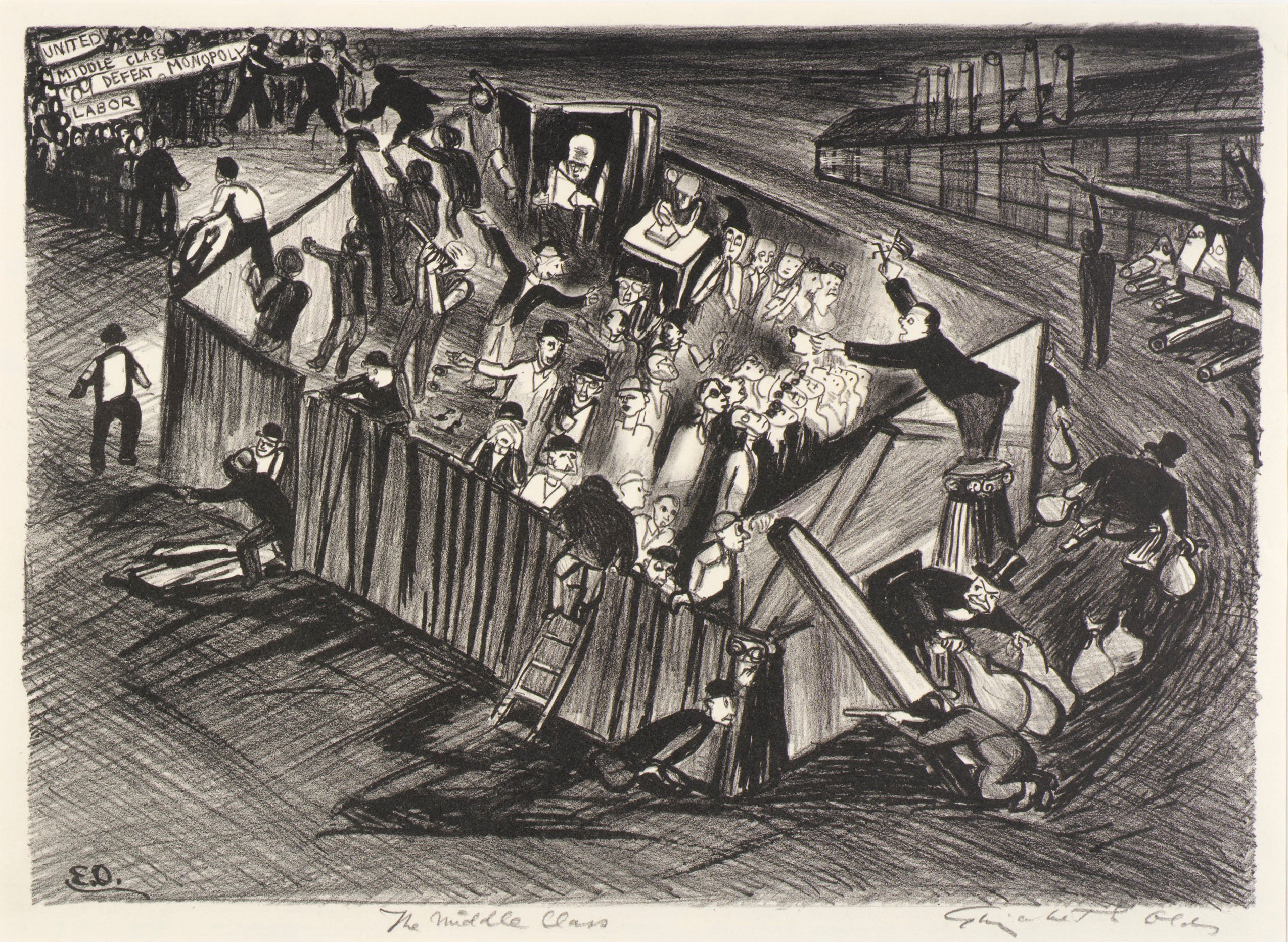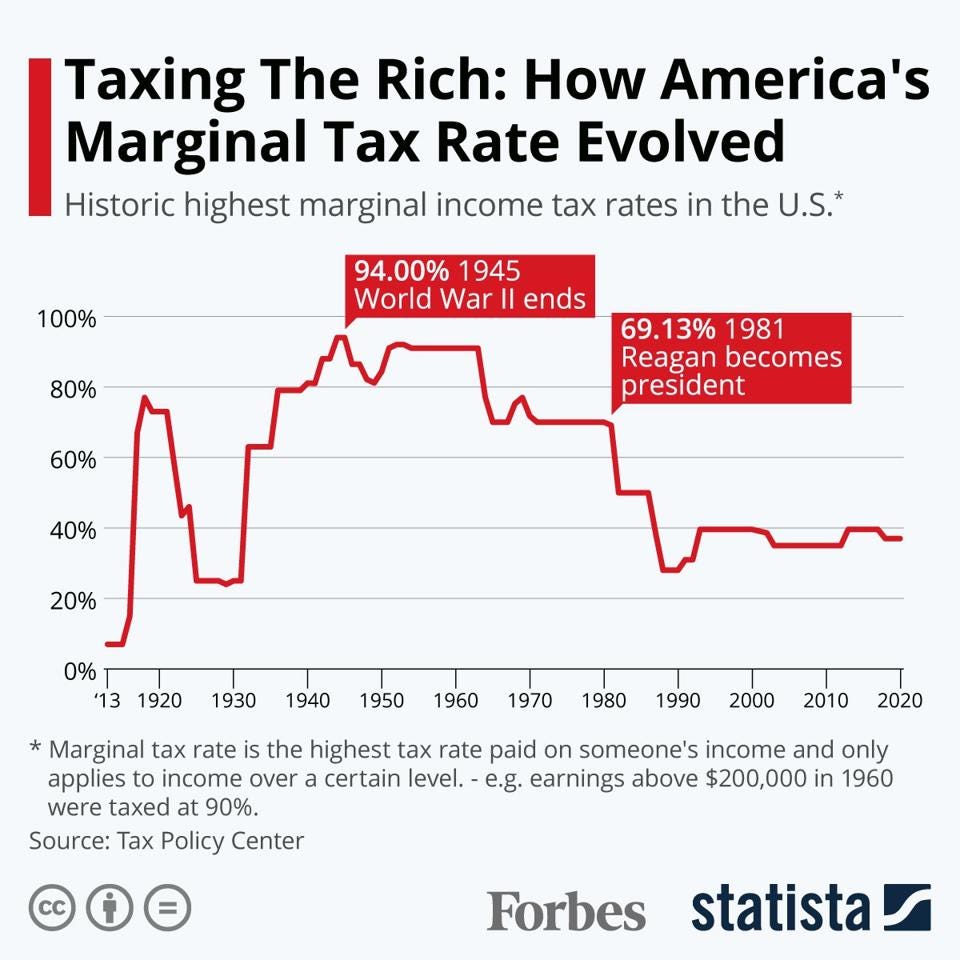Why the Poor Stay Poor in America - The Incredible Shrinking Middle Class
Welcome to Crime and Punishment: Why the Poor Stay Poor in America. I’m thrilled that you signed up to read my newsletter, and I hope that together, we can make a difference.
Note: See the brief explanation at the end of this post about the coming changes to Crime and Punishment: Why The Poor Stay Poor In America! It’s exciting! This post goes out to both free and paid subscribers, but if you are not already a paid subscriber and value this effort and our growing community, please consider upgrading to a paid membership. “For many Americans, the middle class is a matter of identity, aspiration and lifestyle as much as it is about wealth.” NPR, July 7, 2016. I don’t have foolproof answers to the questions posed in this post’s subtitle: “where has our middle-class gone and can we get it back”, but I will provide a bit of history and statistics to show you where the wealth that once belonged to the middle class, in homes, savings and good paying jobs, has been transferred. Unfortunately, it now mostly resides with the rich and super-rich. And most recently, millions of once middle-class folks have been thrown into poverty in 2022 and this year by the rising cost of living and the choice to end the child tax credit and other pandemic aid. So it’s gone in the other direction, too, leaving the once booming middle-class hollowed out, indeed. But it isn’t just about enough money to pay the bills and the accumulation of some wealth, it’s about that thing called hope. I mentioned the idea of a better life for ourselves and our families in my last post—it is why union membership is so important for workers, and by extension, their families and broader communities. It gives them both the hope and the means for a better life. What used to be known as middle-class life has been an aspiration of millions of Americans for over a century, but the idea and “dream” of something better for a larger share of Americans started to take hold right after W.W.II, when the GI Bill provided money to veterans for a college education and a home. As I’ve mentioned here before, my parents, sister and I were able to live this dream because the federal government made the choice to help its veterans, to reward them for their considerable sacrifice. The GI Bill is the only way my father could be the first in his family to graduate from college in 1950 and later purchase a home for his family in 1959. The fact that the middle class in this country saw its greatest expansion from the 1950’s to the early 1970’s was not only because of hard work on the part of returning war veterans and millions of others, it was because the federal government made policy choices to help its citizens—to invest taxpayer dollars for the common good. It gave millions of hard-working Americans the means to create a better life for themselves and their families. Starting with the GI Bill signed by FDR in 1944, followed by expanded, full-time job creation by both government and private industry, an increased percentage of union membership, higher taxes on the wealthy along with expanded government safety net programs signed into law by President Johnson, contributed to building a robust middle class. The percentage of adults claiming a share of the middle class peaked at 61% in 1971 and unfortunately, has declined steadily in the last four decades. Although inflation took its toll on lower income earners in the late 1970’s, the change in income distribution, primarily away from the middle class to the rich, and eventually the ultra-rich, was fueled by the conservative economic policies of the Reagan years: massive tax cuts for the rich, deregulation of business and slashing of social programs. This might be a simplified version of the factors contributing to the shift in wealth inequality in terms of economics, but recent studies strongly suggest these policies directly contributed to today’s startling income and wealth inequality. In 1944-1945, a federal income tax for people making over $200,000 topped out at 94% and continued at high levels until shortly after 1981. Speaking of giving tax cuts to the rich, this chart, prepared by Forbes/Statista and using data from the Tax Policy Center, shows exactly when the marginal tax rate began its precipitous decline. And let’s remember the economic impact of corporations not paying their fair share of federal taxes. In 2017, former President Trump signed into law the Tax Cuts and Jobs Act (TCJA). Among other changes, TCJA lowered the top statutory corporate tax rate from 35 percent to 21 percent, and it remains at 21% today. But according to a late 2022 report published by the U.S. Government Accountability Office (GAO):
Meanwhile, profits of the largest corporations, compiled with data as of January 30, 2022, continued to soar to the highest levels in nearly 70 years. Most recently, the United Auto Workers (UAW) union, whose workers helped make the over-the-top-profits for the three largest U.S. auto companies has been forced to strike for a living wage and decent benefits, so they can earn their way back to the middle class and stay there. It would be funny if it weren’t such a cruel irony, that Mary Barra, the CEO of General Motors, received a pay check of about $29 million in 2022, which is “…362 times the median GM employee’s paycheck according to Securities and Exchange Commission filings.” And those record profits of the auto industry? According to an article by U.S. News and World Report published just days ago:
If you only watch one news clip today, take a few minutes to listen to an interview from this morning’s Face the Nation. Shawn Fain, president of the UAW union spells out exactly why it’s members have authorized a targeted strike, and what this strike means to you, me and the shrinking middle class.  _______________________________________________________________________ Do you consider yourself part of the middle class? Should our country fight to expand it rather than let it disappear? If so, how? Leave your thoughts in the Comment Section below.
As to the forthcoming updates to this newsletter… in a few days, I’ll change the name of Crime and Punishment: Why The Poor Stay Poor In America to The Poverty Trap: Why The Poor Stay Poor In America, at the brilliant suggestion of my writer friend and with the enthusiastic go-ahead of a few long-time and brand new subscribers. This will require a change to my url from: crimeandpunishment.substack.com to thepovertytrap.substack.com. If you have any feedback on whether “the” should be part of the url, please let me know in the next few days—appreciated! According to Substack technical support, this change should proceed rather seamlessly with no links broken. And I’ll send a separate post to all subscribers right after I’ve made the change which will explain my thinking in more detail. You’ll also see a few more substantive changes to the newsletter, like a sharper focus on politics and how our collective action can help break “the poverty trap” for good. Thanks for your continued support of my writing! You’re on the free list for Crime and Punishment: Why the Poor Stay Poor In America. All posts are free for now, but if you’d like to get ahead of the crowd, feel free to support my work by becoming a paid subscriber. | ||||||||||||||||||||||||||||||||||||||||||||||||||||
Older messages
"Unity Is Strength"
Wednesday, September 6, 2023
Listen now (9 mins) | Why Workers Still Need To Flex Their Muscle Through Unions
Climate Change Policy
Monday, August 28, 2023
And How It Affects You — A Few Monday Readings
Inflation Is Going Down, Food Prices Continue To Rise —
Monday, August 21, 2023
Listen now (13 mins) | And More People Are Going Hungry
Predatory Home Buyers
Monday, August 14, 2023
Listen now | Targeting The Elderly, the Poor... And Even The Lonely
Upbeat Environmental News?
Tuesday, August 1, 2023
Yes! Readings To Start Your Week
You Might Also Like
Living seasonally
Friday, February 28, 2025
10 things worth sharing this week ͏ ͏ ͏ ͏ ͏ ͏ ͏ ͏ ͏ ͏ ͏ ͏ ͏ ͏ ͏ ͏ ͏ ͏ ͏ ͏ ͏ ͏ ͏ ͏ ͏ ͏ ͏ ͏ ͏ ͏ ͏ ͏ ͏ ͏ ͏ ͏ ͏ ͏ ͏ ͏ ͏ ͏ ͏ ͏ ͏ ͏ ͏ ͏ ͏ ͏ ͏ ͏ ͏ ͏ ͏ ͏ ͏ ͏ ͏ ͏ ͏ ͏ ͏ ͏ ͏ ͏ ͏ ͏ ͏ ͏ ͏ ͏ ͏ ͏ ͏ ͏ ͏ ͏ ͏ ͏ ͏ ͏ ͏ ͏
Are Voters Souring on the Trump Economy?
Friday, February 28, 2025
Trump is starting to pay a price for ignoring the issue that got him elected. ͏ ͏ ͏ ͏ ͏ ͏ ͏ ͏ ͏ ͏ ͏ ͏ ͏ ͏ ͏ ͏ ͏ ͏ ͏ ͏ ͏ ͏ ͏ ͏ ͏ ͏ ͏ ͏ ͏ ͏ ͏ ͏ ͏ ͏ ͏ ͏ ͏ ͏ ͏ ͏ ͏ ͏ ͏ ͏ ͏ ͏ ͏ ͏ ͏ ͏ ͏ ͏ ͏ ͏ ͏ ͏ ͏ ͏ ͏ ͏ ͏ ͏
“Amto remembers Hussein, Aljibbayn 1983” by Kamelya Omayma Youssef
Friday, February 28, 2025
When the martyr died in my arms, / I pleaded ͏ ͏ ͏ ͏ ͏ ͏ ͏ ͏ ͏ ͏ ͏ ͏ ͏ ͏ ͏ ͏ ͏ ͏ ͏ ͏ ͏ ͏ ͏ ͏ ͏ ͏ ͏ ͏ ͏ ͏ ͏ ͏ ͏ ͏ ͏ ͏ ͏ ͏ ͏
Imagine the space gossip
Friday, February 28, 2025
— Check out what we Skimm'd for you today February 28, 2025 Subscribe Read in browser Header Image But first: Is this man testing the Sabrina Carpenter curse? Update location or View forecast Quote
This Dreamy Dress Trend Will Be Everywhere In 3 Months
Friday, February 28, 2025
Fairytale moments from London Fashion Week. The Zoe Report Daily The Zoe Report 2.27.2025 This Dreamy Dress Trend Will Be Everywhere In 3 Months (Runway) This Dreamy Dress Trend Will Be Everywhere In 3
3x3: February 27, 2025
Friday, February 28, 2025
February is the worst month ͏ ͏ ͏ ͏ ͏ ͏ ͏ ͏ ͏ ͏ ͏ ͏ ͏ ͏ ͏ ͏ ͏ ͏ ͏ ͏ ͏ ͏ ͏ ͏ ͏ ͏ ͏ ͏ ͏ ͏ ͏ ͏ ͏ ͏ ͏ ͏ ͏ ͏ ͏ ͏ ͏ ͏ ͏ ͏ ͏ ͏ ͏ ͏ ͏ ͏ ͏ ͏ ͏ ͏ ͏ ͏ ͏ ͏ ͏ ͏ ͏ ͏ ͏ ͏ ͏ ͏ ͏ ͏ ͏ ͏ ͏ ͏ ͏ ͏ ͏ ͏ ͏ ͏ ͏ ͏ ͏ ͏ ͏ ͏ ͏ ͏ ͏
Should You Do Cardio Before or After You Lift Weights?
Thursday, February 27, 2025
View in Browser Men's Health SHOP MVP EXCLUSIVES SUBSCRIBE Should You Do Cardio Before or After You Lift Weights? Should You Do Cardio Before or After You Lift Weights? If you're combining two
This Google Tool Can Hide Your Personal Info From Search
Thursday, February 27, 2025
Alexa Is Getting an AI Upgrade. Take your privacy back from Google Search. Not displaying correctly? View this newsletter online. TODAY'S FEATURED STORY This Google Tool Can Help Hide Your Personal
“Shakespearean Red,” Dirty Blonde, & More Of Spring’s Biggest Hair Color Trends
Thursday, February 27, 2025
Plus, the spiritual meaning of the new moon, your daily horoscope, and more. Feb. 27, 2025 Bustle Daily LIFE Did Smart Phones Make Us All Stream-Of-Consciousness Texters? Sajina Shrestha self-
Her Student Loans Were Forgiven. Then They Came Back.
Thursday, February 27, 2025
Today in style, self, culture, and power. The Cut February 27, 2025 PERSONAL FINANCE She Thought Her Student Loans Were Gone. Then They Came Back to Haunt Her. Student borrowers are seeing ghost loans



